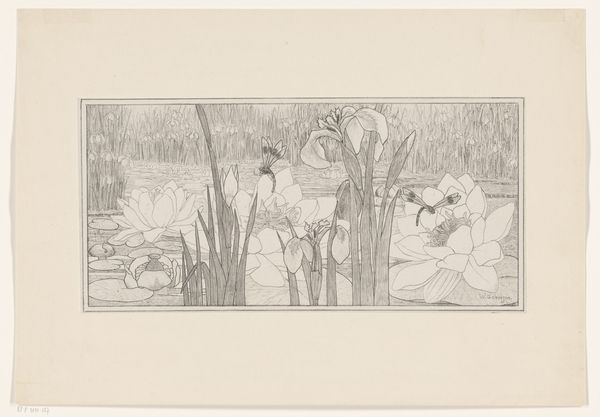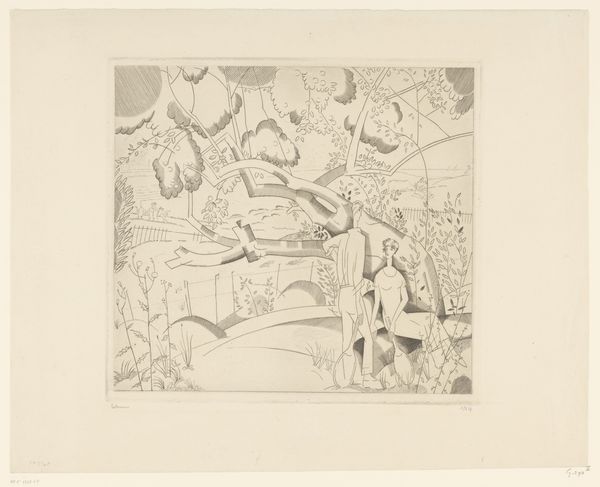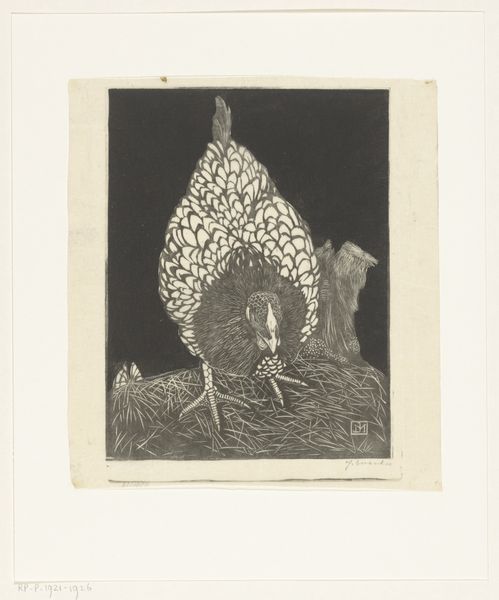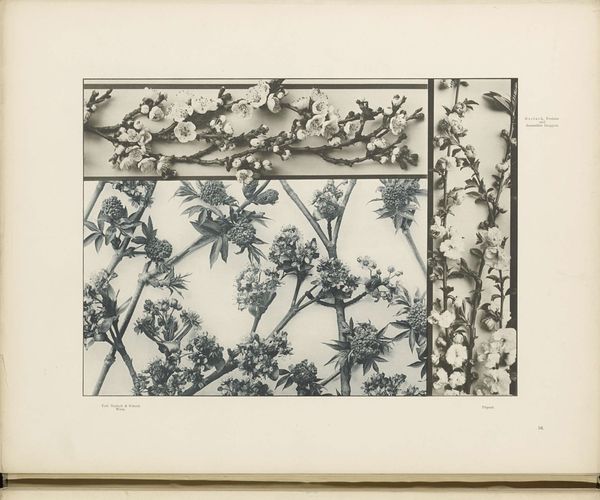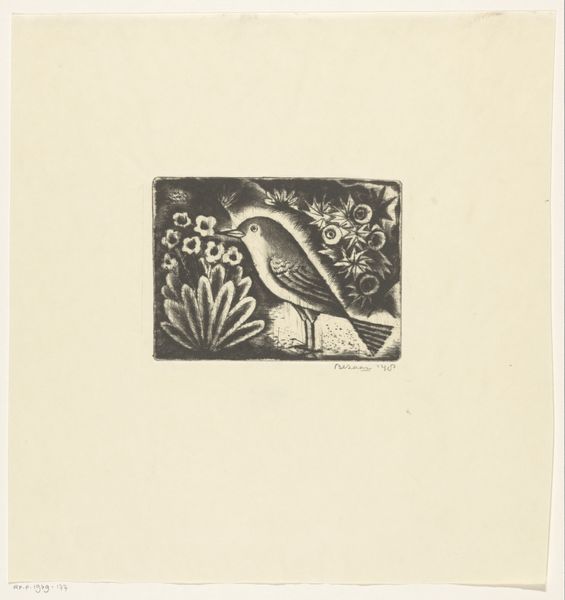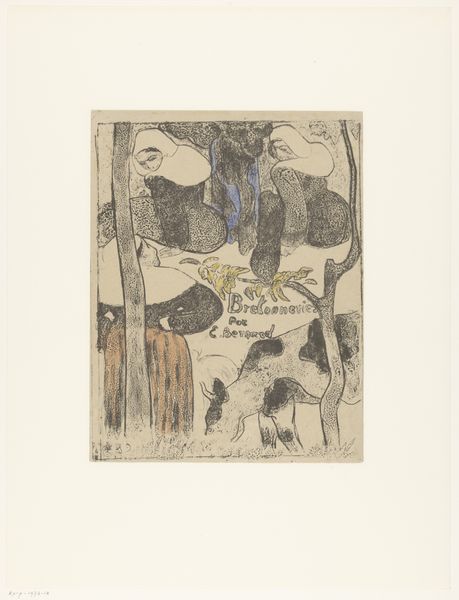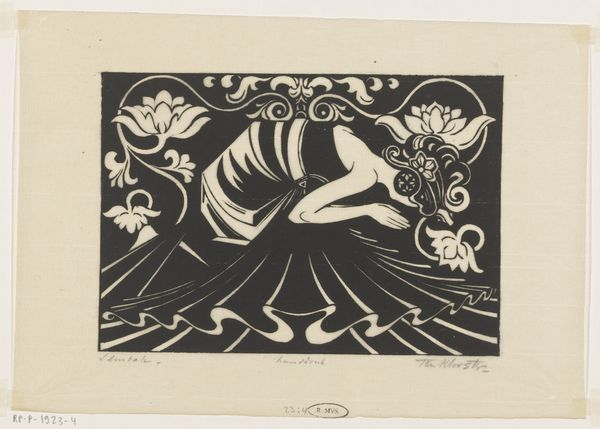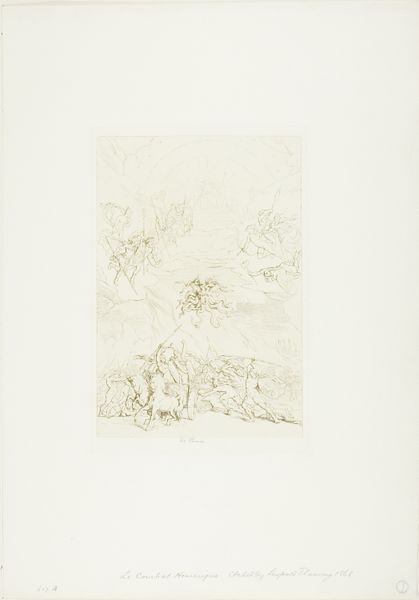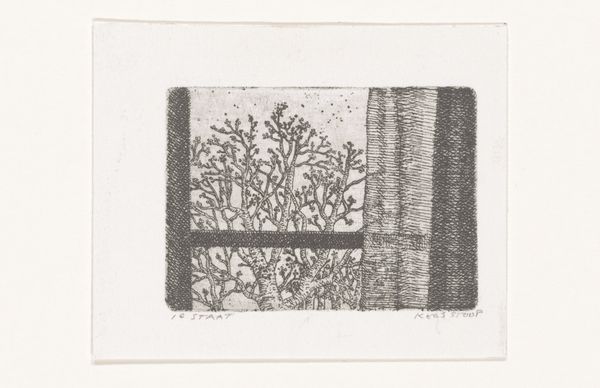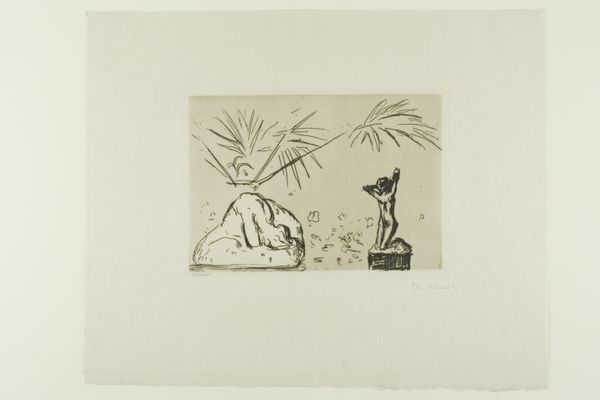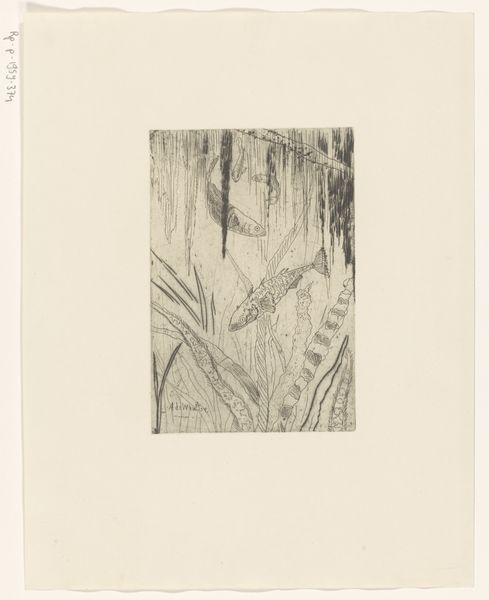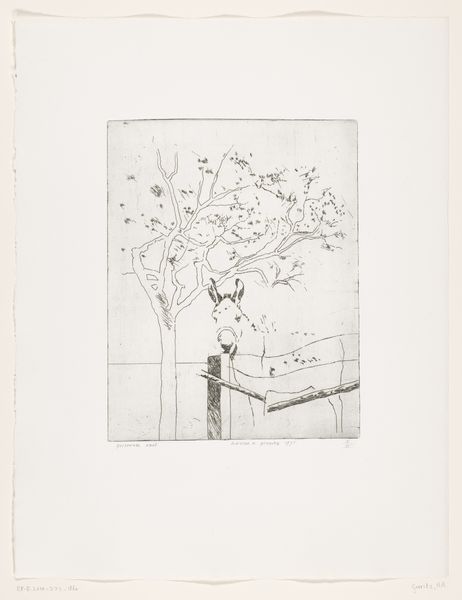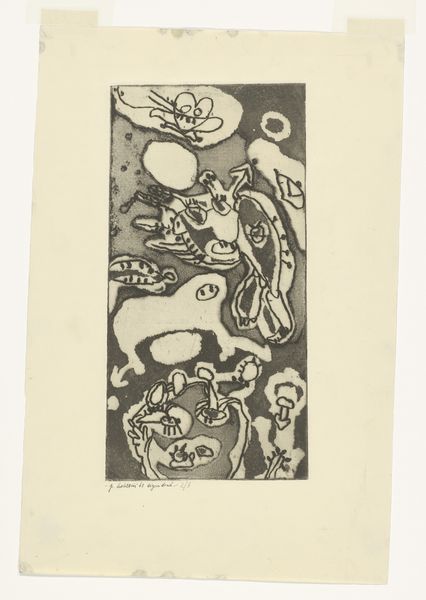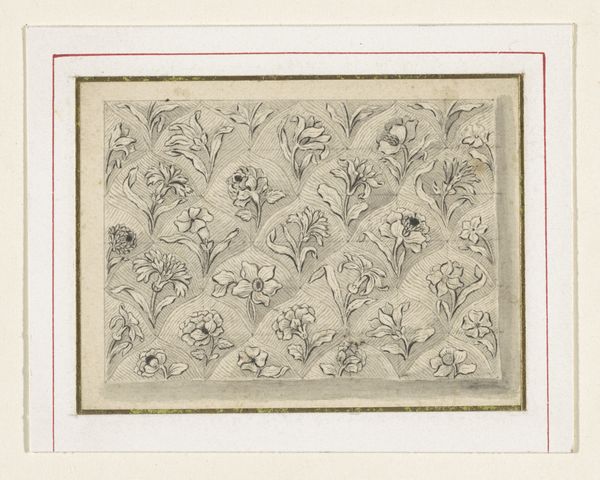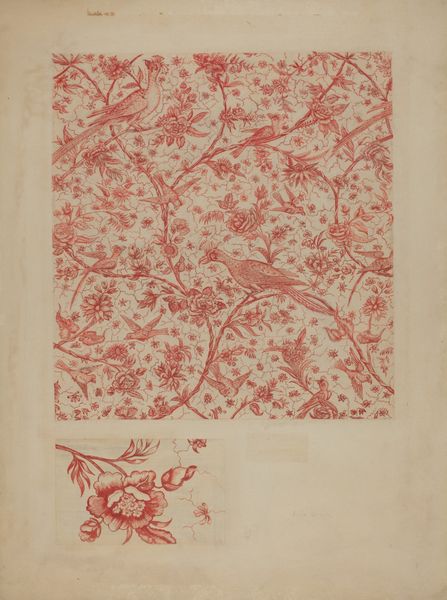
Omslag voor: Theo van Hoytema, Het leelijke jonge eendje, 1893 before 1893
0:00
0:00
drawing, graphic-art, print, linocut, paper, ink
#
drawing
#
graphic-art
#
art-nouveau
# print
#
linocut
#
landscape
#
flower
#
paper
#
ink
#
linocut print
Dimensions: height 368 mm, width 558 mm
Copyright: Rijks Museum: Open Domain
Curator: This is Theo van Hoytema's "Omslag voor: Theo van Hoytema, Het leelijke jonge eendje," created before 1893. It’s currently held here at the Rijksmuseum and made using drawing, graphic arts, print, and linocut techniques on paper with ink. Editor: Striking, isn't it? The stark contrast between the two panels creates a compelling duality. On one side, we see elegance, grace, the clean lines of a swan, a lone flower…and on the other side we see density. An interwoven floral, fauna and a mythical fairy world—quite heavy, even oppressive by contrast. Curator: Absolutely. And thinking about that contrast materially: the swan is a linocut, simplified for quick reproduction and a larger audience. Note also, this was designed as an illustration for a children's book, likely produced and distributed relatively widely. It emphasizes Art Nouveau’s commitment to democratizing design by bringing it into everyday life. Editor: Yet within those accessible images lies symbolic depth. Swans, of course, carry connotations of grace and transformation; there is perhaps also, that famous idea of a swan song and its connotations with grief and tragic beauty. What is most appealing about this image to me, is this interplay. We are at once aware of Hoytema, the maker of popular image as well as the conveyer of very deep symbolic content. Curator: Precisely. This cover operates on many levels—on the level of popular imagery, and accessible narrative on one hand. However it’s clear Hoytema thought of labor involved in production; how each linocut mark contributes to the overall design. What's fascinating here is his attention to the relationship between mass production and handcraft and between art for art's sake and art for all. Editor: And isn't that duality itself central to the “Ugly Duckling” story? That journey of self-discovery, of revealing inner beauty beneath a perceived lack? Curator: Exactly! Hoytema uses this format to reinforce that central theme—the cover invites children into the world, but gives adults another level of interpretation too, reminding them that everything from bookmaking to mythical stories operate on multiple levels of reality. Editor: Indeed. A compelling insight into Art Nouveau's complex dialogue between accessibility, artistry, and deep, enduring symbolism.
Comments
No comments
Be the first to comment and join the conversation on the ultimate creative platform.
